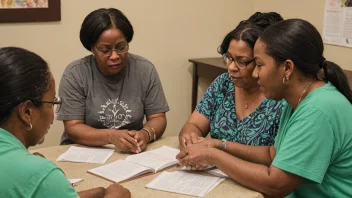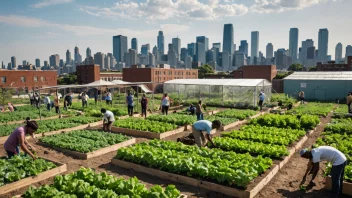Introduction
In today's world, social change is often achieved through collective efforts. Building a community coalition can amplify voices, combine resources, and create lasting impact. In this article, you will learn how to effectively build coalitions that promote social change within your community. We will provide a step-by-step guide that outlines the essential components of forming a successful coalition, ensuring that your initiatives are impactful and sustainable.
Step 1: Identify Common Goals
The first step in building a community coalition is to identify the common goals that unite your community members. This involves understanding the specific issues that need addressing and recognizing the shared interests.
- Conduct a Needs Assessment: Gather data through surveys, interviews, or community meetings to identify the pressing issues.
- Engage Community Members: Hold discussions with various stakeholders to gauge their perspectives and priorities.
- Define Clear Goals: Work collaboratively to establish clear, achievable goals that resonate with the community.
Step 2: Assemble a Diverse Group of Stakeholders
Once you have established common goals, the next step is to assemble a diverse group of stakeholders who can contribute to the coalition.
- Identify Key Players: Look for individuals and organizations that have a vested interest in your goals, including community leaders, local businesses, and non-profits.
- Encourage Inclusivity: Ensure representation from various demographics, including age, race, and socioeconomic status to foster a well-rounded perspective.
- Build Relationships: Create a welcoming environment where stakeholders feel valued and motivated to contribute.
Step 3: Establish a Governance Structure
A clear governance structure is crucial for the effective functioning of the coalition. This step involves setting up roles, responsibilities, and decision-making processes.
- Define Roles: Identify leadership roles within the coalition, such as a chairperson, secretary, and treasurer.
- Create Bylaws: Develop a set of rules that govern the coalition’s operations, including meeting frequency and voting procedures.
- Set Up Committees: Form committees focused on specific tasks, such as outreach, fundraising, or program development.
Step 4: Develop a Strategic Plan
A strategic plan serves as a roadmap for your coalition's activities, outlining how you will achieve your goals.
- Set Objectives: Break down your goals into specific, measurable objectives to track progress.
- Identify Resources: Determine the resources required, including funding, volunteers, and materials.
- Create a Timeline: Establish a timeline for achieving your objectives to maintain focus and accountability.
Step 5: Mobilize and Engage the Community
Community engagement is essential for the success of your coalition. Mobilizing the community will help in raising awareness and garnering support.
- Host Events: Organize events such as workshops, forums, or community service days to engage residents.
- Utilize Social Media: Use social media platforms to spread the word about your coalition and its objectives.
- Encourage Participation: Invite community members to take an active role in the coalition's initiatives.
Step 6: Evaluate and Adapt
Continuous evaluation and adaptation are vital for the sustainability of your coalition. Regularly assess your progress and adjust strategies as necessary.
- Gather Feedback: Conduct surveys or focus groups to obtain feedback from coalition members and the community.
- Measure Impact: Use qualitative and quantitative methods to measure the impact of your initiatives.
- Adjust Strategies: Be open to making changes based on feedback and evaluation results to improve effectiveness.
Conclusion
Building a community coalition for social change is a powerful way to address pressing issues and create a positive impact. By following these steps—identifying common goals, assembling a diverse group, establishing governance, developing a strategic plan, mobilizing the community, and evaluating progress—you can foster a coalition that drives meaningful change. Remember, successful coalitions thrive on collaboration, inclusivity, and adaptability. Your efforts can create a ripple effect, inspiring others to join in the pursuit of social justice.






